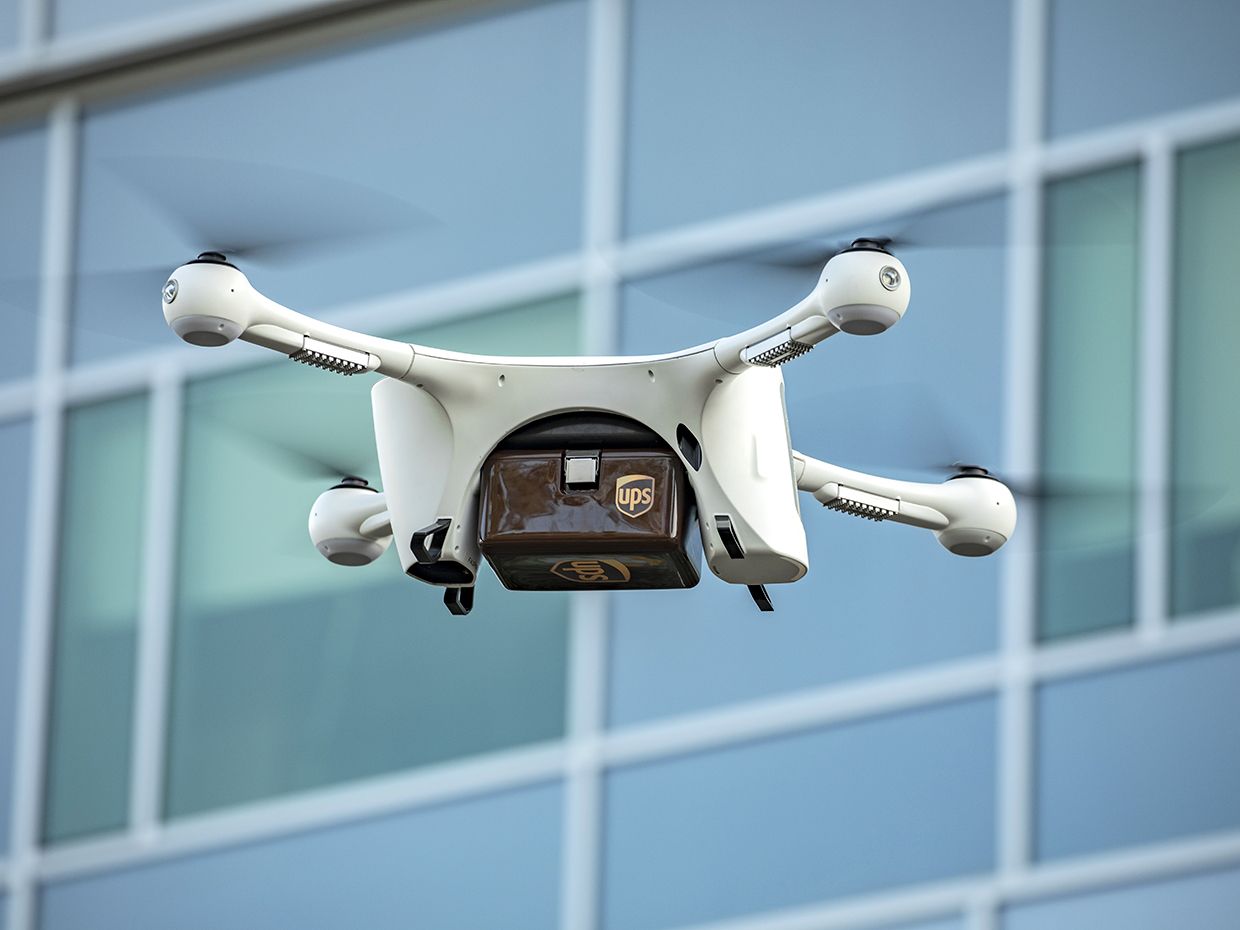U.S. Commercial Drone Deliveries Will Finally Be a Thing in 2020
 Photo: United Parcel Service This large quadcopter delivers medical samples at a Raleigh hospital complex.
Photo: United Parcel Service This large quadcopter delivers medical samples at a Raleigh hospital complex. 
When Amazon made public its plans to deliver packages by drone six years ago, many skeptics scoffed-including some at this magazine. It just didn't seem safe or practical to have tiny buzzing robotic aircraft crisscrossing the sky with Amazon orders. Today, views on the prospect of getting stuff swiftly whisked to you this way have shifted, in part because some packages are already being delivered by drone, including examples in Europe, Australia, and Africa, sometimes with life-saving consequences. In 2020, we should see such operations multiply, even in the strictly regulated skies over the United States.
There are several reasons to believe that package delivery by drone may soon be coming to a city near you. The most obvious one is that technical barriers standing in the way are crumbling.
The chief challenge, of course, is the worry that an autonomous package-delivery drone might collide with an aircraft carrying people. In 2020, however, it's going to be easier to ensure that won't happen, because as of 1 January, airplanes and helicopters are required to broadcast their positions by radio using what is known as automatic dependent surveillance-broadcast out (ADS-B Out) equipment carried on board. (There are exceptions to that requirement, such as for gliders and balloons, or for aircraft operating only in uncontrolled airspace.) This makes it relatively straightforward for the operator of a properly equipped drone to determine whether a conventional airplane or helicopter is close enough to be of concern.
Indeed, DJI, the world's leading drone maker, has promised that from here on out it will equip any drone it sells weighing over 250 grams (9 ounces) with the ability to receive ADS-B signals and to inform the operator that a conventional airplane or helicopter is flying nearby. DJI calls this feature AirSense. "It works very well," says Brendan Schulman, vice president for policy and legal affairs at DJI-noting, though, that it works only "in one direction." That is, pilots don't get the benefit of ADS-B signals from drones.
Drones will not carry ADS-B Out equipment, Schulman explains, because the vast number of small drones would overwhelm air-traffic controllers with mostly useless information about their whereabouts. But it will eventually be possible for pilots and others to determine whether there are any drones close enough to worry about; the key is a system for the remote identification of drones that the U.S. Federal Aviation Administration is now working to establish. The FAA took the first formal step in that direction yesterday, when the agency published a Notice of Proposed Rulemaking on remote ID for drones.
Before the new regulations go into effect, the FAA will have to receive and react to public comments on its proposed rules for drone ID. That will take many months. But some form of electronic license plates for drones is definitely coming, and we'll likely see that happening even before the FAA mandates it. This identification system will pave the way for package delivery and other beyond-line-of-sight operations that fly over people. (Indeed, the FAA has stated that it does not intend to establish rules for drone flights over people until remote ID is in place.)
 Photo: United Parcel Service Technicians carry out certain preflight procedures, as with any airline.
Photo: United Parcel Service Technicians carry out certain preflight procedures, as with any airline. One of the few U.S. sites where drones are making commercial deliveries already is Wake County, N.C. Since March of last year, drones have been ferrying medical samples at WakeMed's sprawling hospital campus on the east side of Raleigh. Last September, UPS Flight Forward, the subsidiary of United Parcel Service that is carrying out these drone flights, obtained formal certification from the FAA as an air carrier. The following month, Wing, a division of Alphabet, Google's parent company, launched the first residential drone-based delivery service to begin commercial operations in the United States, ferrying small packages from downtown Christiansburg, Va., to nearby neighborhoods. These projects in North Carolina and Virginia, two of a handful being carried out under the FAA's UAS Integration Pilot Program, show that the idea of using drones to deliver packages is slowly but surely maturing.
"We've been operating this service five days a week, on the hour," says Stuart Ginn, a former airline pilot who is now a head-and-neck surgeon at WakeMed. He was instrumental in bringing drone delivery to this hospital system in partnership with UPS and California-based Matternet.
Right now the drone flying at WakeMed doesn't travel beyond the operators' line of sight. But Ginn says that he and others behind the project should soon get FAA clearance to fly packages to the hospital by drone from a clinic located some 16 kilometers away. "I'd be surprised and disappointed if that doesn't happen in 2020," says Ginn. The ability to connect nearby medical facilities by drone, notes Ginn, will get used "in ways we don't anticipate."
This article appears in the January 2020 print issue as "The Delivery Drones Are Coming."